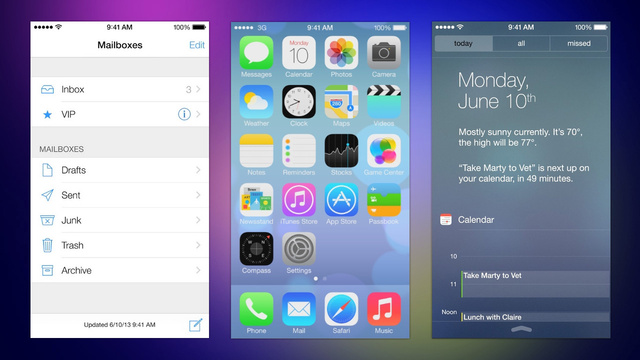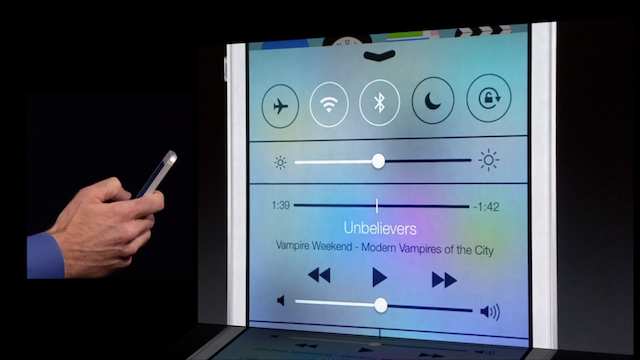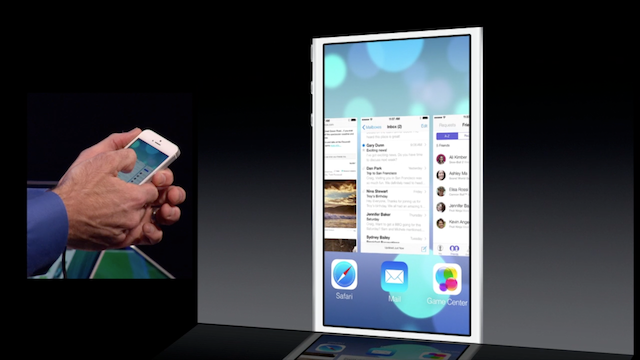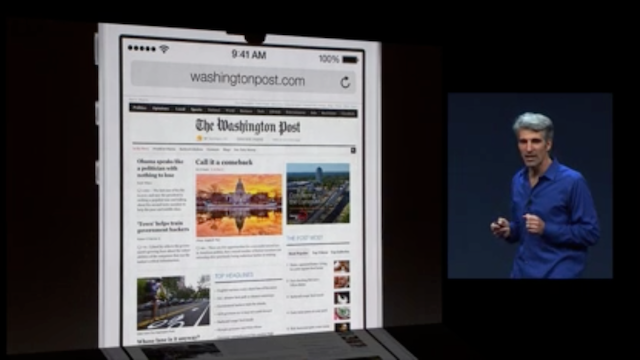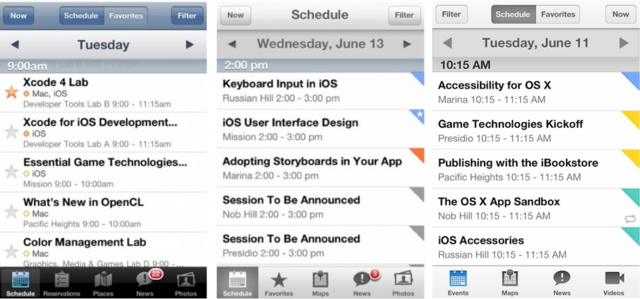A recent survey of 150,000 PCs shows that Apple computers are the best at running Windows. Not surprisingly I have Windows 7 on my MacBook Pro. Unlike any of my other three current computers which are a custom PC, Fujitsu Lifebook T4410 tablet and an Asus Eee PC 1020, the MacBook Pro has never met any errors - despite the fact that it is used more than the latter two. After one and a half years running smoothly on Windows 7, it still outperforms my desktop getting to the Windows Desktop even after a reformat. My MacBook Pro has an i5 2.3GHz whereas my desktop has an i7 3.4GHz and double the RAM.
Anyway, here is the link for the information:
Simply, I have upgraded my desktop to Windows 8 now. My post back in October 2012 is now absolutely out of date because I now actually want to use Windows 8.
I have been looking for the ideal monitor solution too and came up with the Dell S2340T monitor which I will be getting at the same time as my next PC which probably will come around about November this year (will not be a gaming built machine this time, as I will be keeping The Zebra to serve that purpose). It's funny I had a Dell monitor previously and loved it, traded it for a much better IPS Asus monitor, loved it too and here I am looking at another Dell monitor. That also means that the Asus PA238q will be for sale, so if you are interested in a 23" IPS LED backlit display which has absolutely remarkable picture quality and is only 2 years old, you can email me through my website to show your interest.
I am probably looking at a low-powered Mini ITX form factor based PC or, to most people who read this blog's shock, a Mac Mini when they get the 2013 model released. Whatever computer I get next as my primary computer, it will be running Windows 8 without a doubt. I am much the fan of the touch technology built into Windows and have been using it for about 4 years now (with my Fujitsu).
What I now love about Redmond's Windows 8 is still unclear to me, but things like the newly designed Windows Explorer, the new touch keyboard (which will work well with the Dell S2340T), the Start screen on touch, support for USB 3.0 and perhaps the fact that there is now an app store (but it probably should not be referred to as the 'app' store considering that is the first three letters of Apple, hence why they called applications 'apps').
Not that I had not mentioned it already, but Apple were supposedly getting ready with the launch of a new product range. It has now come to light that it could in fact be a games console, evidence suggests based on new features brought to iOS 7.
http://www.kotaku.com.au/2013/06/sorry-consoles-apples-controller-support-spells-trouble-for-you/
Posted from my Wii U.
Whilst it is not like Apple to admit they are wrong, they will have to now. They are now trying to get into the larger and even larger phone market which is already crowded with other large phones such as the Samsung Galaxy S4. Now Apple is looking for a potential 5.7" display for their iPhone line up.
http://www.macrumors.com/2013/06/13/apple-considering-4-7-and-5-7-screens-for-2014-iphone-models/
Uh oh! I cannot believe I am writing another of these "Why I will not be going..." posts on my blog and again this one points at another Microsoft product. This is the third product line that I have now ditched. Back in October 2012, I mentioned my dislike for Windows 8 after running the beta for months and experiencing the release candidate and then I mentioned my hatred for Windows Phone which I had been using for 18 dreadful months too long.
I was a Microsoft fanboy throughout later primary school and all throughout secondary school. Since about 2011, I have started to completely change that, now following companies like Google and Apple a lot more. Today, nothing has changed, well actually, it has. Microsoft has pushed me further away from them.
I am not going to start saying that I was going to purchase myself an Xbox One any time in the near future, but I had been planning on it when it had saturated it a bit. So today, I started to think to myself, is it really that bad? Well, the answer is actually a lovely great big yes. Which now officially confirms that I have ditched Microsoft. Even after family members were Microsoft employed for a while, receiving invitations for events like the Xbox One release (but didn't go, these were mainly whilst I was in the hospital - thanks for that Microsoft, you know when to fire out the events!) and all the rest, I dislike how Microsoft are now. That company has ruined itself.
In my opinion, all of it went downhill when we lost Bill Gates. Nobody can deny that his last release of the operating system, Windows Vista, was a software bloat and in turn a huge mistake, but it cannot be said that it was down to his work that it failed. I'm sure that under Gates' management skills, we could have seen a similar operating system to Windows 7, which remedied all of the problems created by Vista. But Gates also maintained a stronger position for the company as a whole. The Xbox 360 had some real games on it and had a decent user interface (I dislike the constantly new updated dashboards on the Xbox 360 because I feel that they get worse and worse), the PC still ran on a desktop operating system, not one designed for both tablets and sort of on desktops, and they had Windows Mobile, which ran on PDAs and SmartPhones but felt like a basic version of Windows, not Windows Phone.
Looking at Microsoft's current Windows 8 market share of 4.27% as of June 2013 and Windows Phone market share of 2.0% as of May 2013 people clearly do not care for Microsoft products the way they used to. I am within that group now.
The main point of this post was to describe the Xbox One and its pros and cons. Somehow the Xbox One has been another one of these disasters in my view. It seems like Microsoft wants rid of their company in my eyes.
Price
Xbox One: £429
Wii U: £299 - £349
PS4: £349
Winner: Wii U, lowest price
Disc format
Xbox One: Blu-Ray disc
Wii U: Proprietary Wii U Optical Disc (based on Blu-Ray), Wii Optical Disc
PS4: Blu-Ray disc
Winner: Xbox One and PS4 as they can also play Blu-Ray and DVD films
CPU
Xbox One: Octa-core (8 cores) AMD
Wii U: Tri-core PowerPC
PS4: Octa-core AMD with two quad-core dies
Winner: Xbox One, a single octa-core almost always performs better than a dual-die system
GPU
Xbox One: AMD 768 shader modules at 800MHz
Wii U: AMD 320 shader modules at 550MHz
PS4: AMD 1152 shader modules at 800MHz
Winner: PS4, most shaders at the same clock frequency
RAM
Xbox One: 8GB DDR3 2133MHz RAM (5GB for games) giving a system bandwidth of (8 x 2.133) x 2 lines per clock x 2 modules = 68.256GB/s
Wii U: 2GB DDR3 1600MHz RAM (1GB for games) giving a system bandwidth of (2 x 1.6) x 2 lines per clock x 2 modules = 12.8GB/s
PS4: 8GB GDDR5 5500MHz RAM (7GB for games) giving a system bandwidth of (8 x 5.5) x 2 lines per clock x 2 modules = 176GB/s
Winner: PS4, the highest RAM frequency due to GDDR5's higher bandwidth (GDDR5 also is better at dealing with larger requests than DDR3 which copes better with small requests) and also has the most free memory for games and the highest memory bandwidth.
Storage
Xbox One: 500GB hard drive which is non-replaceable
Wii U: up to 32GB of non-replaceable flash storage
PS4: 500GB hard drive which is upgradeable
Winner: PS4, 500GB hard disk which can be upgraded against the Xbox
Output resolution
Xbox One: 4K
Wii U: 1080p or 2K
PS4: 4K
Winner: Xbox One and PS4, they both support 4K resolution (3840 x 2160 or 2160p) whereas the Wii U supports just 1080p
Input methods
Xbox One: Xbox One Wireless Controller, motion controls with Kinect, voice commands with Kinect, SmartGlass app for iOS and Android
Wii U: Wii U GamePad, Wii Remotes, Wii U Pro Controller, Wii Classic Controller, Wii Nunchuk, Wii Balance Board
PS4: DualShock 4, motion controls with PlayStation Move, PlayStation Vita and the PlayStation app for iOS and Android
Winner: Wii U, there is no app for tablets, but it makes up for it by supporting 5 players on one console with a variety of different inputs that mostly come from existing Wii hardware.
Constant online connection required
Xbox One: required to be connected to the internet every 24 hours on the primary console and every hour on a secondary console
Wii U: none
PS4: none
Winner: Wii U and PS4, you do not need a constant internet connection
Region locks
Xbox One: region locked
Wii U: region locked
PS4: no region lock
Winner: PS4, there is no region lock
Backward compatibility
Xbox One: none
Wii U: NES, SNES, N64, GameCube, Commodore 64, MegaDrive, TurboGrafx, NeoGeo, Master System through Virtual Console and Wii Optical Disc support
PS4: an online service that will permit the streaming of previous-generation games
Winner: Wii U, the most varieties of games
Connectivity
Xbox One:
-
2x HDMI (one in and one out)
- 3x USB 3.0 ports
- Wi-Fi
- Kinect port
- b/g/n wireless
Wii U:
- HDMI port
- 4x USB 2.0 ports
- SD memory card
- Bluetooth
- Near Field Communication (NFC)
- AV Multi Out (composite, VGA, component, SCART support)
- Sensor bar port
- a/b/g/n wireless
PS4:
- HDMI port
- 2x USB 3.0 ports
- Bluetooth
- PS4 Camera port
- b/g/n wireless
Winner: Xbox One or Wii U, the Wii U features an extra USB 2.0 port which means you can plug in more devices but at the cost of speed (480Mbps vs 5Gbps). No matter what, the PS4 is the loser here.
One more thing...
I have actually begun to get even more annoyed because I read that at E3 Microsoft did not even demonstrate the games they were showing on an Xbox One. In fact, they were shown on a PC. Read this.
Yesterday, at WWDC, Apple announced iOS 7. As always, a new version of iOS creates a spark that brings a new feature to it. Well 7 brings a new interface. The new interface is set to look flatter.
One of the features I have constantly jailbroken my device in the past in order to use is the new Control Center. This is similar to the Android Notification Center which permits the changing of settings such as Bluetooth, Wifi, NFC, Airplane Mode and Do Not Disturb. There is also the possibility of adding things like a torch to it.
There is also a new multi-tasking engine. This makes multi-tasking more responsive and overall better. Two taps on the Home button is all you need and you will get all of the running apps at the bottom.
Full screen support is added to Safari as well as a new Quick Search. The most important change is the fact that they have removed the 8 tabs limit (finally).
Other great features brought to it include the App Store automatically updating apps, a new voice for Siri that sounds more human (we shall see) and with better services such as Wikipedia, AirDrop and a new car interface.
A really important new feature to come to iOS 7, iTunes and Apple TV is iTunes Radio, Apple's new music streaming service designed to compete with Spotify (never liked these services myself anyway). However, iTunes Radio is free with advertisement included or paid for to be ad-free.
iOS 7 works on iPod 5th generation or later, iPhone 4 and later (finally the end of the 3GS) and iPad 2 and later.
All the photos in this blog post are from Lifehacker and I referenced them in this article.
Simply as the title says, this is my list of games that I will be getting for the Wii U this year and next year! The ones in bold are the most important.
- Donkey Kong Country Tropical Freeze
- Game and Wario
- The Legend of Zelda: The Wind Waker HD
- Mario Kart 8
- Pikmin 3
- Rayman Legends
- Scribblenauts Unlimited
- Super Luigi U
- Super Mario 3D World
- Super Smash Bros Wii U (I will probably get the 3DS version as well)
- Wii Party U
- Wonderful 101
Edit: here is the list of games now with ones I now own or are preordered (with the strikethrough):
- Donkey Kong Country Tropical Freeze
Game and WarioThe Legend of Zelda: The Wind Waker HD- Mario Kart 8
Pikmin 3Rayman LegendsScribblenauts UnlimitedSuper Luigi USuper Mario 3D WorldSuper Smash Bros Wii UWii Party U- Wonderful 101
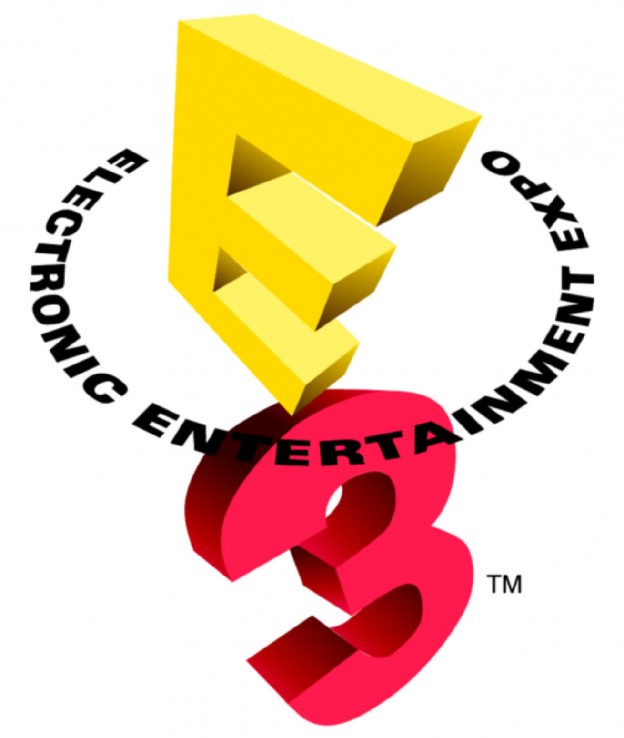
A date to book into your diaries if you are a gamer; next week!
Are you as excited as I am about some of the latest games to be announced this month at E3? Just a Consumer Electronics Show surprised us with a load of cool gadgets and even higher definition televisions, Electronic Entertainment Expo is set to show off a horde of new games, including two of my favourite game series Metal Gear Solid 5 and the new Super Smash Bros game. On top of that, we will see the first photos of the new PS4 console that Sony have kept quiet for a while.
On the subject, Super Smash Bros is a game that has been grabbing my attention since the release of Brawl because although the previous iteration was a good game, I still feel that there was room for improvement, so from that day onwards I have constantly speculated as to what characters may appear in the next game.
There are plenty of other games to be announced though, so do not worry if you are not a fan of either of my two most anticipated games.
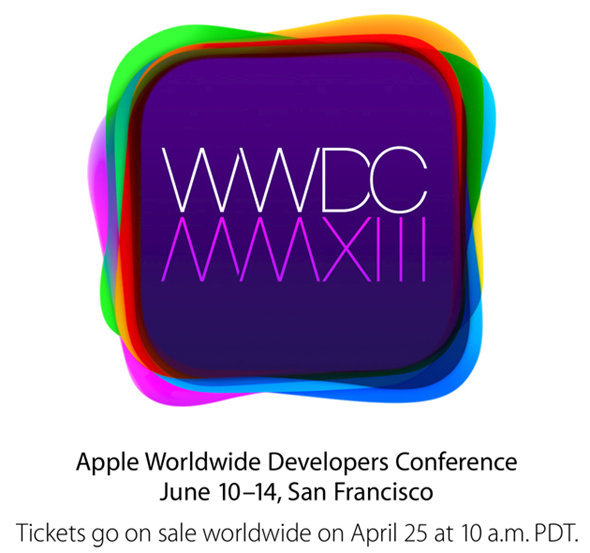
June is the month that all Apple-interested people out there get to find out what Apple has in store for us in the next year. That's because they hold their annual WWDC (World-Wide Developer Conference) where they do a few samples of products that are going to be released throughout the year. Normally we see a release of iOS and Mac OS X and this year is no different.
Apple released their app for iOS which explains the event lineup for those who attend and it gives us an idea as to what is going to be released. iOS 7 is the obvious one, as Scott Forstall once mentioned that Apple releases a new iOS every year and it is always announced at WWDC. According to Gizmondo, iOS will be flatter, following the same pattern Microsoft have gone with for Windows 8.
The images are from Gizmodo and show how it will change. I'm particularly fond of one theme for all, rather than different themes everywhere (just look at Painter Pro) and I read the Guardian's article and quote this one important line:
The death of skeumorphism (seen in apps such as Find My Friends, which suffers faux leather stitching for no obvious reason, and Find My iPhone, which displays a bizarrely flickering compass needle while it "looks" for your device, and so on) will be widely celebrated. Scott Forstall, the former chief for iOS software, was known to be a fan of skeumorphism; Ive isn't.
Mac OS X 10.9 (speculation about the codename being Lynx seemed spot on, but due to the Unilever brand also sharing the name they chose not go down that route) also will be revealed. Will it move one step closer to being iOS in a Mac body? Who knows.
Other things that are expected are hints at some new Haswell hardware in the Mac lineup. Perhaps including that desirable Mac Mini, Mac Pro and Thunderbolt Display that have been long awaited. There is still that possibility of a full on television set coming from Apple and being announced at WWDC, that way apps can be developed ahead of the launch.
There may be an iPad 5 being announced and perhaps also an iPhone 5S (maybe a smaller iPhone). This is because the iPhone 5S may be released before the next model which is normally released in October. The iPad could be released because normally the release is around March and they did not release a new iPad this year.
I'll be following Redmond Pie for information when it get's released. You can read more here.
They are finally here! Intel's 4th generation line of Core processors codenamed Haswell first started appearing on sale just this week to the consumer line and it does not disappoint.
The new CPU is 25% more efficient than the Ivy Bridge CPUs and it's integrated GPU is 2.6x more powerful. The IGP ends up being 50% faster when used to graphics intense tasks such as video editing or light gaming that the processors are suited to.
But where Ivy Bridge touched on Haswell intends to improve. The main forte of Ivy Bridge was still desktops, laptops and Ultrabooks. Haswell on the other hand has a much higher energy saving and therefore is well suited to tablets.
The IGP is where it is at however. The Ivy Bridge CPU itself is already a powerhouse and with only a few minor improvements for this side of things, the graphics chip has had full attention. To me personally, I believe that including a GPU in the CPU to create SoC (System-On-a-Chip) is a great idea and one that is great for those who use the GPU for certain tasks (I love the Quick Sync 2.0 feature in my Sandy Bridge CPU as it makes video rendering much faster) but I also have a dedicated GPU (AMD Radeon 7950) for gaming and for other GPU intensive applications.
The improvements within the GPU are incredibly useful for tablets and other devices which can utilise the lower power consumption and better performance better than a PC with a dedicated graphics card. What's more, the CPUs all feature different GPUs which allows for a broad scalability ranging from servers to tablets. It is claimed that the highest end GPU (Iris Pro 5200) included has a total of 40 execution cores (or units) in comparison to Sandy Bridge's stock of 16 cores. Intel has promised scalability of the GPU as the lowest end (HD 4200) model only has 20 units - still more than Sandy Bridge.
Haswell will also use a different socket to both Ivy Bridge and Sandy Bridge now using Socket 1150 which means no backward compatibility.
For the mean time, if you are like me and are waiting for Broadwell, the successor to Haswell (14nm fabrication process) or even waiting further then here is the new box design for you to look at.


